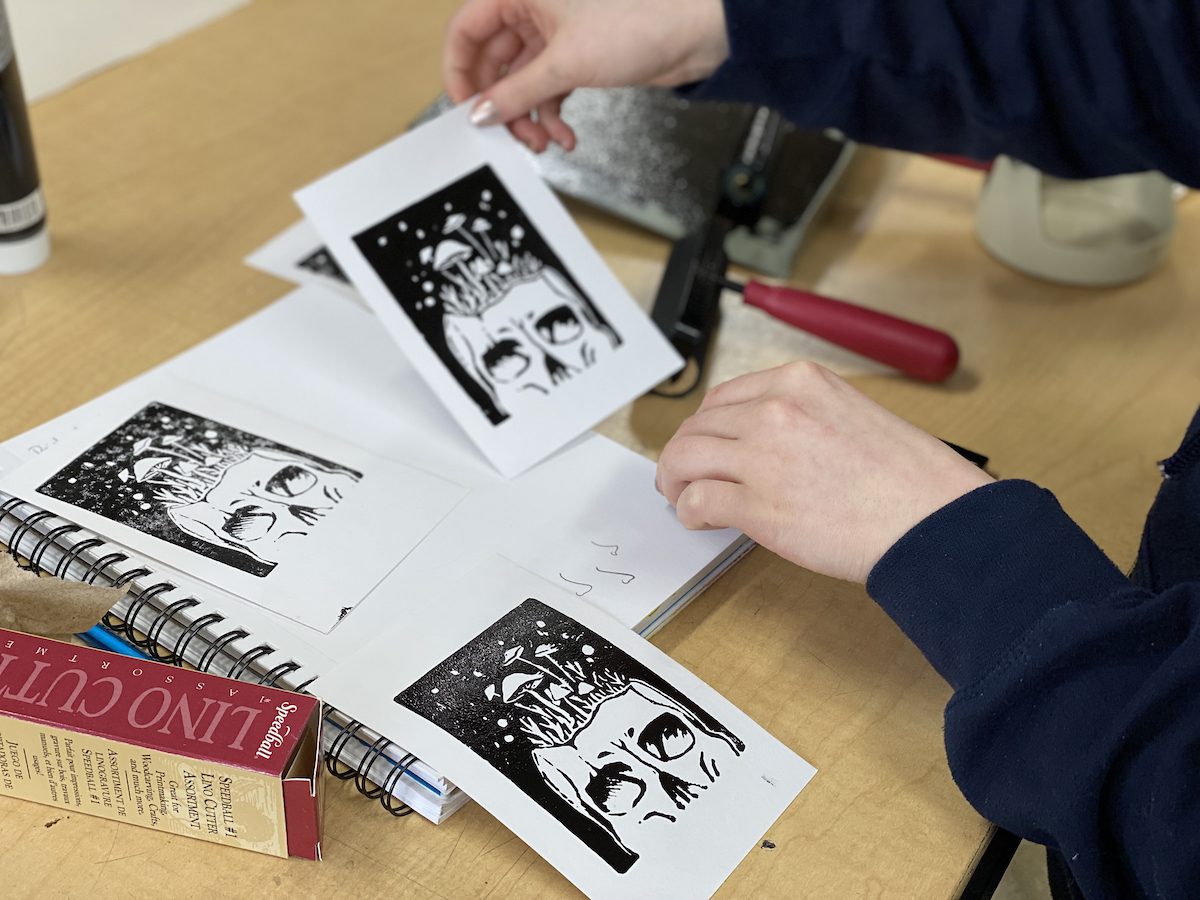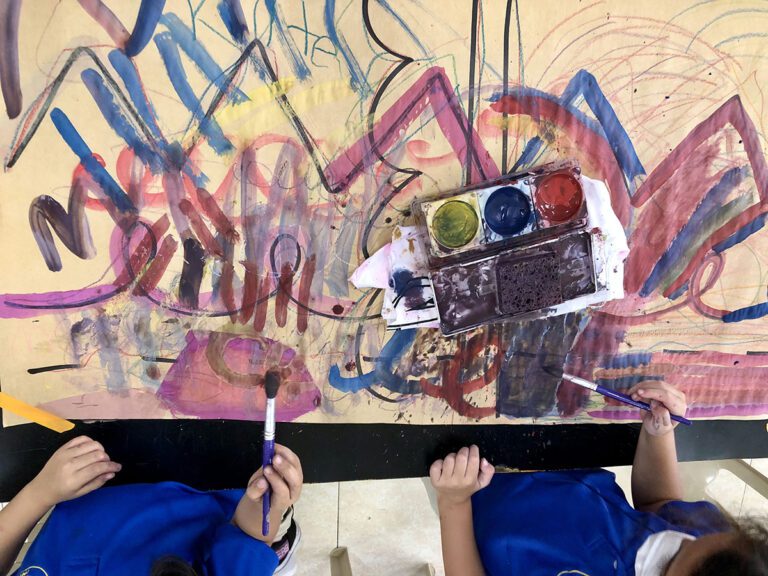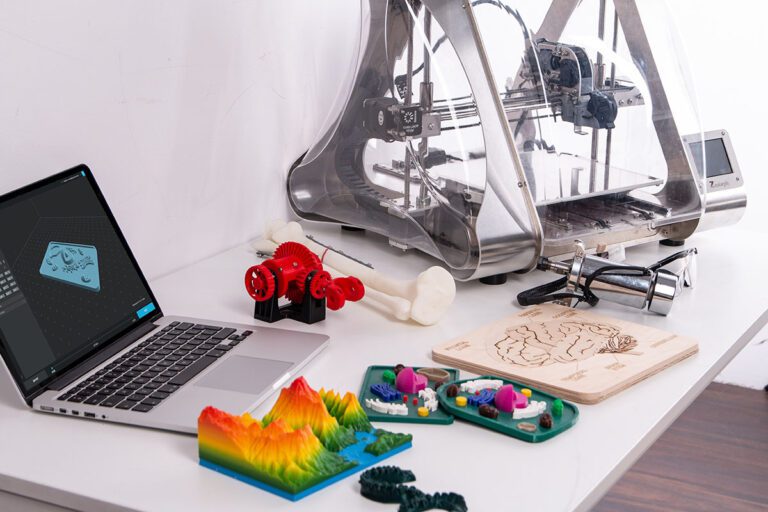Social-Emotional Learning (SEL) has become a top priority in education over the past few years. Integrating SEL into your practices is even more essential during these unprecedented times. While there are many avenues and strategies to incorporate SEL into art education, the choice-based curriculum spectrum, in particular, provides a unique opportunity.
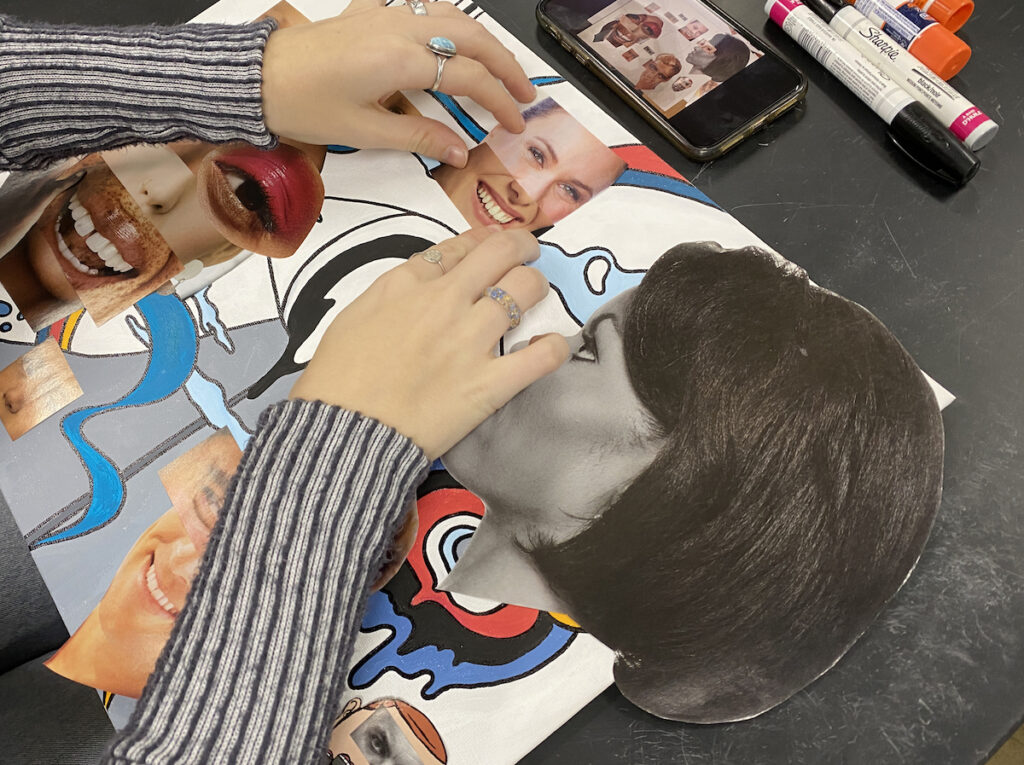
What is SEL?
According to The Collaborative for Academic, Social, and Emotional Learning (CASEL), Social-Emotional Learning is “The process through which all young people and adults acquire and apply the knowledge, skills, and attitudes to develop healthy identities, manage emotions and achieve personal and collective goals, feel and show empathy for others, establish and maintain supportive relationships, and make responsible and caring decisions.”
As art teachers, we are at the forefront of education for Social-Emotional Learning. We tap into our students’ intrinsic need for self-expression, provide them a safe place to practice mindfulness, and connect with their personal interests to engage in learning. How can we ensure Social-Emotional Learning is happening throughout our curriculum? There are plenty of amazing mindfulness routines and SEL activities to incorporate into your curriculum. Using choice in your teaching will also continually support authentic social-emotional connections.
What is Choice?
Essentially, Choice Art is a teaching methodology or a way to deliver instruction. Choice Art Education looks different for every teacher depending on your student population, their needs and age group, and even your personal teaching style. Regardless of how you set up your classroom, Choice Art engages students using the Choice Continuum.

This sliding scale allows you to teach students from one end of the spectrum (teacher-directed lessons) to the other end (full choice student-directed artmaking) and everywhere in between. Teaching with the Choice Continuum allows us to meet our students exactly where they are at any given moment to support and foster growth through the development of technical and conceptual skills.
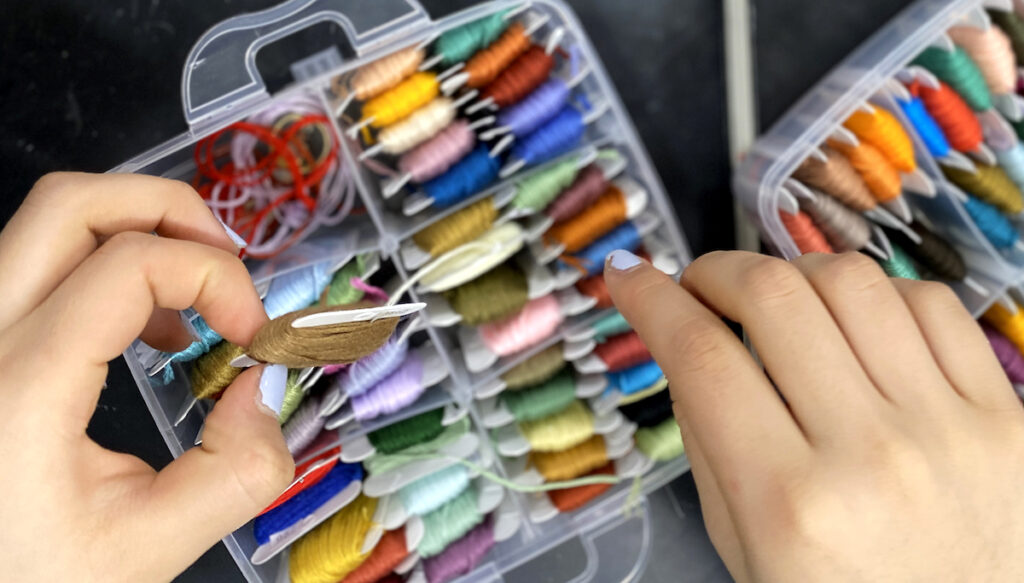
Where Are You on the Choice Spectrum?
How does choice support SEL?
There are three main ways Choice Art supports Social-Emotional Learning. Using choice:
- Promotes student agency
- Empowers artistic voice
- Supports differentiation of instruction and students’ individualized needs
Let’s take a deeper look at each of these.
How does choice promote Social-Emotional Learning through student agency?
In a choice classroom, students choose paths of learning based on their personal interests and curiosities. Even in a highly teacher-directed, skill-building exercise, students still have room to explore. For example, a student may practice value shading with graphite but will also have a choice of what object to observe and shade. As the class progresses, students develop confidence in making their own choices. Over time, students have more and more freedom to connect in meaningful ways. When teaching a new skill, the teacher may pull back the level of choice in order to provide a space for safe practice.
Trying something new and taking risks is a vulnerable expectation. To build social-emotional resilience, students can do this while sitting first in their comfort zone. When given too many options or asked to take too many risks all at once, most students become overwhelmed. The goal of choice is to empower students to make decisions, not to produce anxiety for fear of failure. While step-by-step instruction often feels comforting, we also want to support students to develop who they are as artists. By promoting student agency through safe practice, students build confidence to be unique thinkers and individuals.
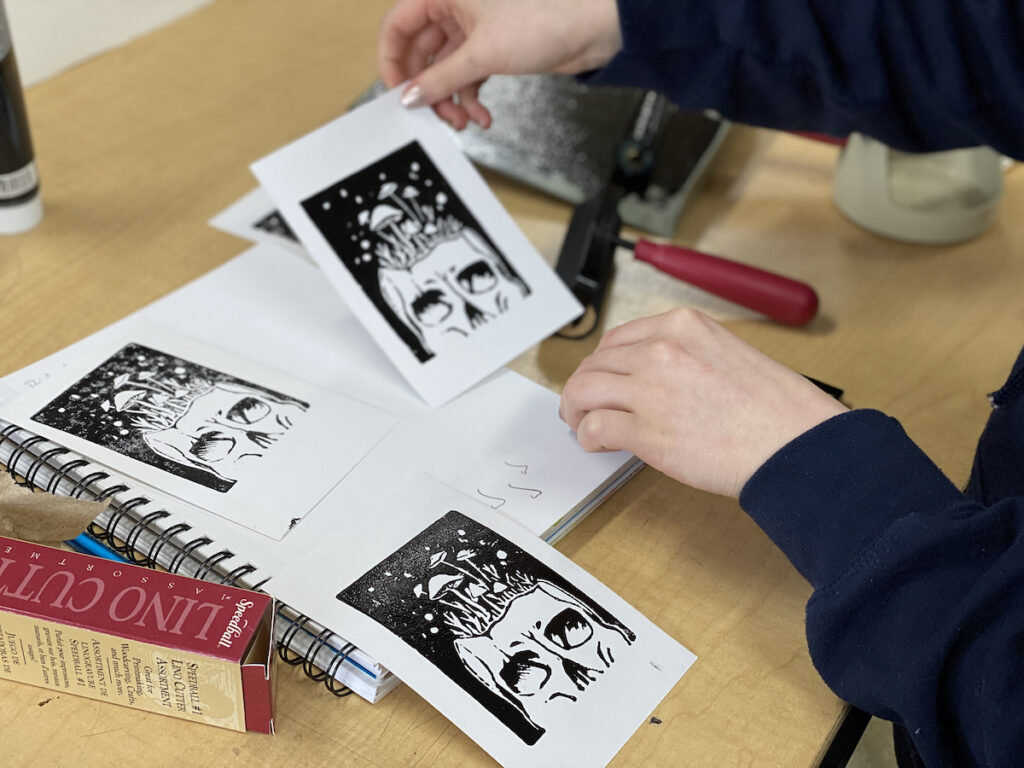
How does choice support Social-Emotional Learning through empowering artistic voice?
Just as choice builds confidence through student agency, so does it embrace individual uniqueness. Choice celebrates personal visions and interests, instead of those of the teacher. Students feel empowered to set their own path while being supported and guided by the teacher. Students engage in their own creative process to fulfill their artistic vision.
Top 5 Myths to Teaching a Choice Curriculum
Students’ social-emotional needs are developed by celebrating students for who they are. Because each student is creating something unique, peers become inspired by each other instead of competing for who “did it best.” In the choice classroom, artists’ artmaking journey is shared throughout the process, and students build confidence in creating. Critiques celebrate and build community because they are authentically exciting! Discussions engage students to learn more about who they are and the reasoning behind their artistic decisions. Instead of pointing out what students like and don’t like about another’s work, critiques celebrate student differences.
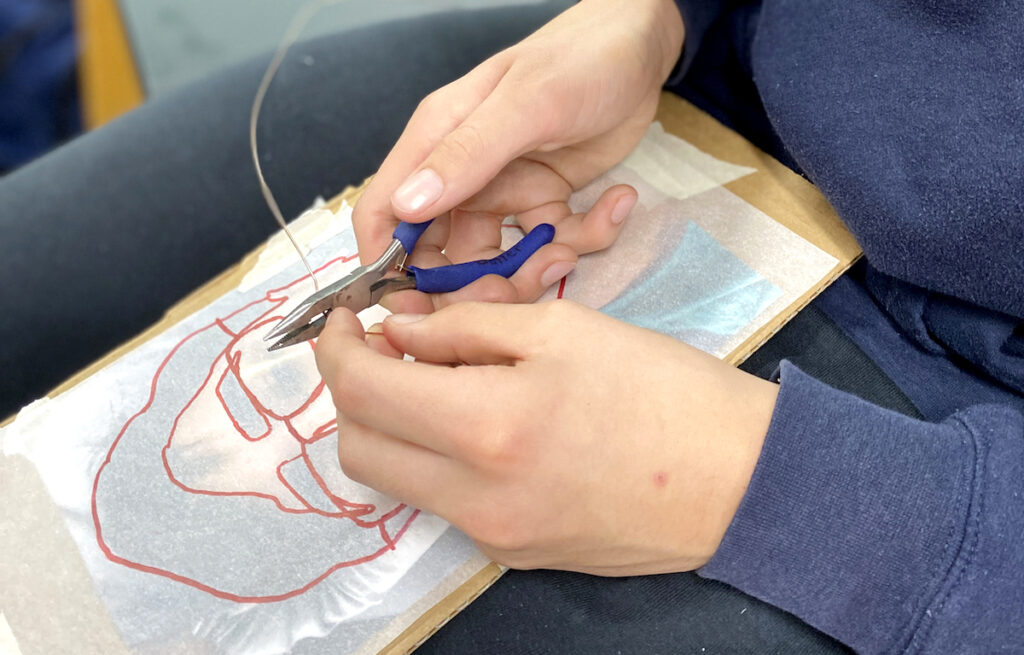
How does choice support students’ individual needs?
Choice Art is inherently differentiated (and also individualized) to meet each student where they are. Although you teach all students the same foundational skills, choice allows you to work with students to provide interventions and extensions to support all levels. Students develop abilities at their own pace and are supported and celebrated for what they can do, not penalized for what they should or can’t do. The focus of a Choice Art classroom is growth, encouraging students to take risks and learn through trials and failures.
In what ways can we scaffold SEL through choice?
Building technical supports in small chunks allows students to gain confidence with less frustration. Students with varying fine motor skills, anxiety toward trying or starting something new, or those feeling overwhelmed in a class are supported through this scaffolded approach. Whether in person, remote, or hybrid, scaffolding choice both technically and conceptually is key and can be done.
How to Maintain Student Choice with Online Learning
Choice Art often gets a bad rap; “it’s just a free-for-all.” But, if that were truly the case, we would be supporting our students’ neither technically nor emotionally. Just as in math, students can’t do algebra without first learning how to add and subtract. When you introduce a new skill, give ample time for student practice in a low-risk environment. Chunk these large tasks into smaller, more manageable pieces. We all know a student needs to learn how to shade a value scale before applying it to a self-portrait. By doing so, you are supporting your students’ Social-Emotional Learning.
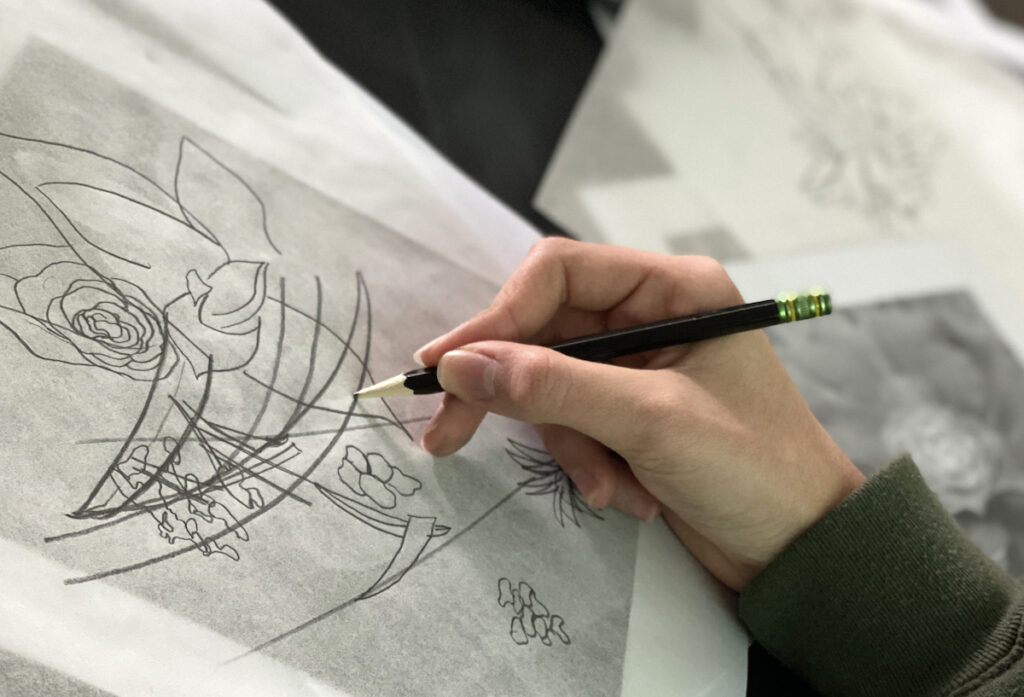
How can we teach technical skills to support SEL?
When exploring choice, students practice new media first in small exercises, then in small scale projects or mini artworks before attempting a full-scale artwork. For example, our value shading example might look like this:
- Step 1: Teacher-directed, packaged instructions:
Student learns how to shade with a pencil in a few different types of value scales. - Step 2: Teacher-directed, student practice:
Student practices shading on a sphere and cube. - Step 3: Some choice, teacher-supported:
Student explores value by shading a small 3″ x 3″ drawing of an object of their choice. - Step 4: More choice, teacher-supported:
Finally, student creates their own still life and a fully developed value drawing.
Through the choice approach, you can quickly identify any technical needs through intervention strategies. As students develop, they naturally become more interested in the variations in outcome instead of comparing technical prowess. Through opportunities for exploration of media or subject matter, we are saying, “I believe in you; I know you can make good decisions.”
How can choice support SEL meaning-making?
When it comes to concept, it’s important to provide students with a scaffolded approach. In Social-Emotional Learning, this means you need to provide levels of emotional safety. For example, the sketchbook prompt, “Draw one household object from observation,” has some level of choice. However, it does not provide opportunities for social-emotional connections to meaning-making. If your goal is to have students draw from observation, consider having students choose one of three provided prompts.
- Prompt Option 1: Pick one shoe and draw from observation. Write a haiku about that shoe’s journey.
- Prompt Option 2: Pick one object that has personal meaning to you. Draw this object from observation. Write a short narrative about a specific memory you have with this object.
- Prompt Option 3: Consider your emotional state in relation to current events. Find one object that represents your feelings. Draw this object from observation. Provide one sentence as a newspaper “headline” about your object.
In this example, students are practicing the technical skill of drawing from observation. And you have provided supports to explore a prompt they are emotionally able to access. Including a writing prompt along with the sketchbook, the exercise connects meaning-making at every level of creating.
Support SEL when creating full-scale artworks through artwork proposals. Engage artists in the decision-making process and let them know you are there to guide. Open-ended prompts are a great way to provide a range of constraints and limitations while also giving access to interpretation. Proposals tell students you are interested in what they have to say. These become opportunities for dialogue instead of an expectation for one specific end product. Using prompts and proposals tap directly into students’ social-emotional needs through this ongoing discussion of idea exploration.
No matter what level of choice you provide students, you are supporting them through Social-Emotional Learning. Providing too many choices at once can overwhelm students and lead to anxiety. Not enough choice at the right time will cause students to disengage from the learning process. Some students need opportunities to express their innermost feelings, while it may simply be too much for others to confront. Continue to meet your students where they are by providing choice for both technical and conceptual confidence building.
In what ways do you provide choice in your teaching practice?
What SEL activities do you like to use in your teaching practice?
How can you start using choice to support SEL?
Magazine articles and podcasts are opinions of professional education contributors and do not necessarily represent the position of the Art of Education University (AOEU) or its academic offerings. Contributors use terms in the way they are most often talked about in the scope of their educational experiences.
